smart #1 vs Hyundai IONIQ 5 – Differences & prices compared
Compare performance, boot space, consumption and price in one view.
Find out now: which car is the better choice for you – smart #1 or Hyundai IONIQ 5?
The smart #1 (SUV) comes with a Electric engine and Automatic transmission. In comparison, the Hyundai IONIQ 5 (SUV) features a Electric engine with Automatic transmission.
When it comes to boot capacity, the smart #1 offers 323 L, while the Hyundai IONIQ 5 provides 520 L – depending on how much space you need. If you’re looking for more power, decide whether the 428 HP of the smart #1 or the 609 HP of the Hyundai IONIQ 5 suits your needs better.
In terms of consumption, the values are 16.80 kWh per 100 km for the smart #1, and 15.60 kWh for the Hyundai IONIQ 5.
Price-wise, the smart #1 starts at 31700 £, while the Hyundai IONIQ 5 is available from 37600 £. Compare all the details and find out which model fits your lifestyle best!
In the realm of electric vehicles, the Hyundai IONIQ 5 and smart #1 stand out as innovative contenders, each catering to distinct market segments. The Hyundai IONIQ 5 boasts a spacious, futuristic design with cutting-edge technology and impressive range capabilities, making it a top choice for those prioritizing comfort and performance. Meanwhile, the smart #1 appeals to urban drivers with its compact size and nimble handling, ideal for navigating tight city streets without compromising on electric efficiency.
smart #1
The smart #1 marks a significant evolution in design philosophy, merging urban practicality with modern aesthetics. Its compact size belies a spacious interior, crafted to offer a comfortable and connected driving experience. With its focus on eco-friendly motoring, the smart #1 is set to charm city dwellers seeking both efficiency and style.
details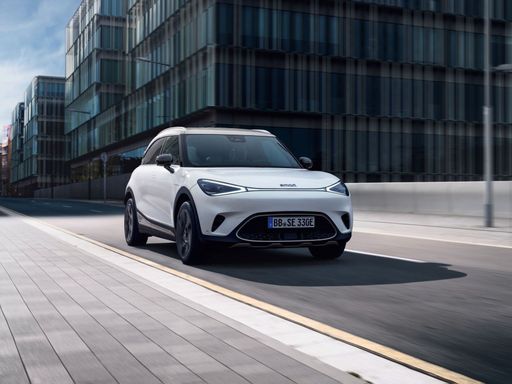 @ Smart Deutschland
@ Smart Deutschland
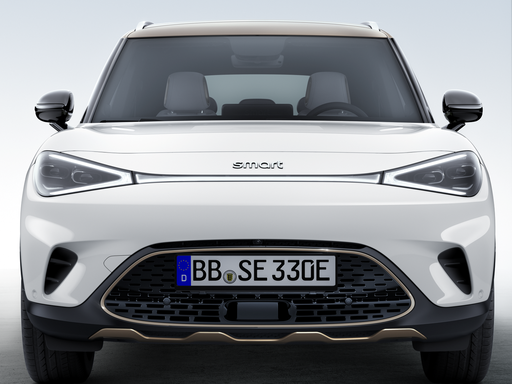 @ Smart Deutschland
@ Smart Deutschland
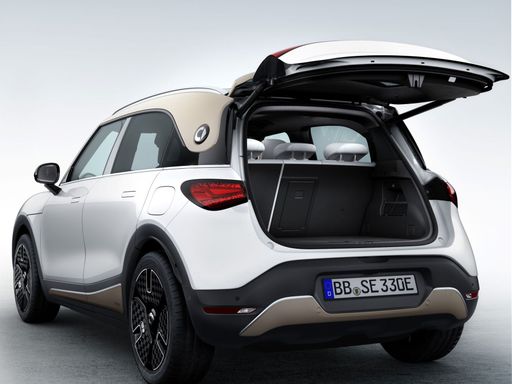 @ Smart Deutschland
@ Smart Deutschland
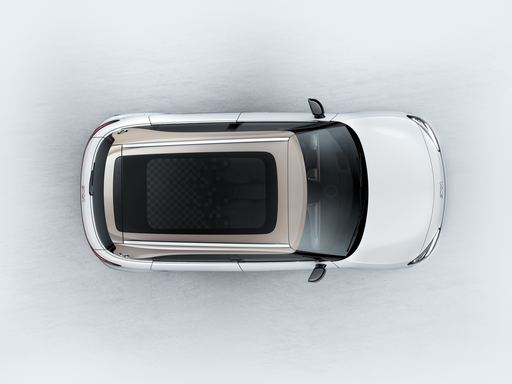 @ Smart Deutschland
@ Smart Deutschland
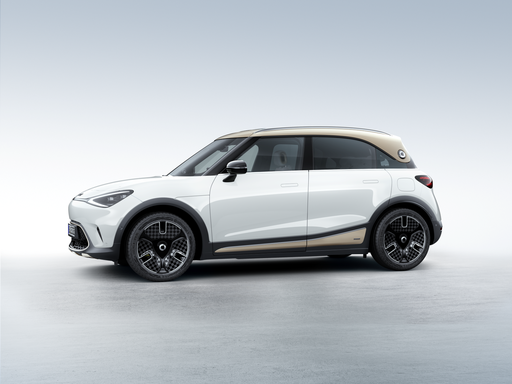 @ Smart Deutschland
@ Smart Deutschland
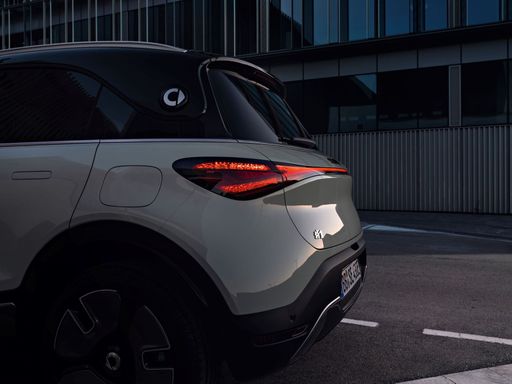 @ Smart Deutschland
@ Smart Deutschland
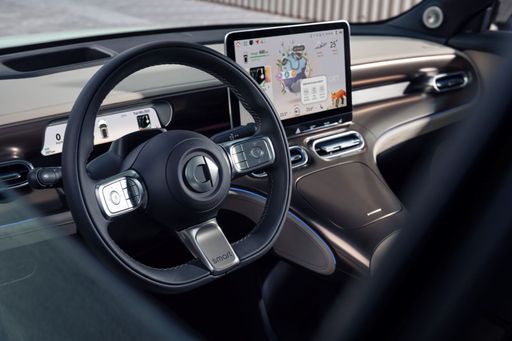 @ Smart Deutschland
@ Smart Deutschland
Hyundai IONIQ 5
The Hyundai IONIQ 5 showcases a bold and futuristic design that captures attention with its striking facade and sharp lines. This electric vehicle offers an impressive blend of performance and efficiency, making it a compelling choice for environmentally conscious drivers. Inside, the spacious and tech-forward interior provides a comfortable and engaging driving experience for both driver and passengers.
details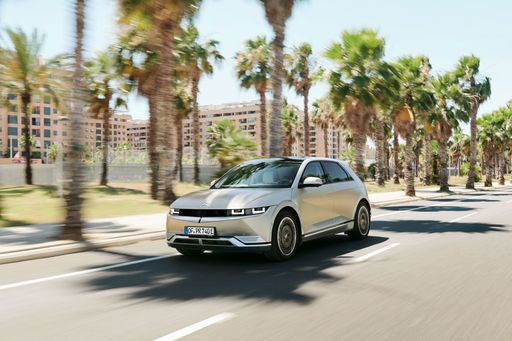 @ hyundai.news
@ hyundai.news
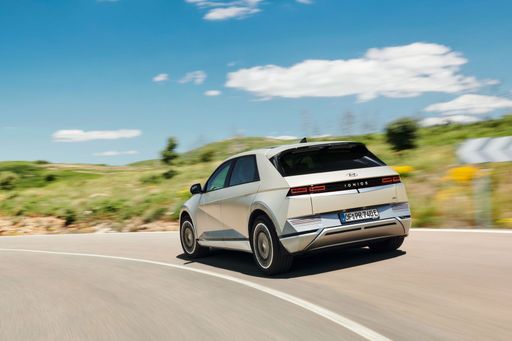 @ hyundai.news
@ hyundai.news
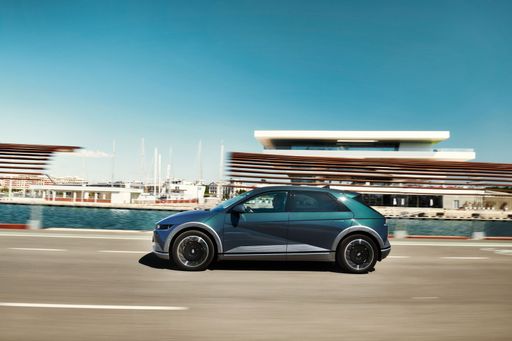 @ hyundai.news
@ hyundai.news
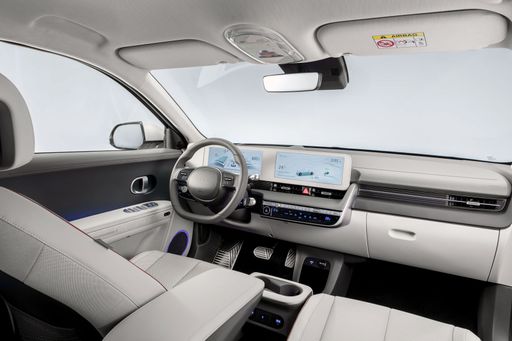 @ hyundai.news
@ hyundai.news
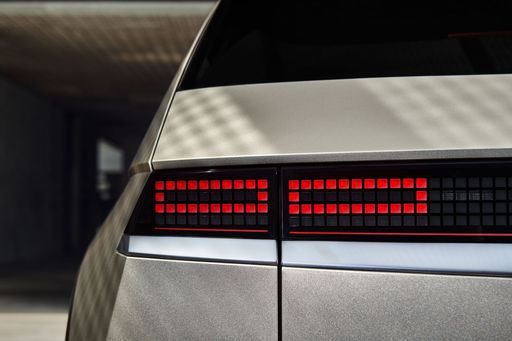 @ hyundai.news
@ hyundai.news
The Electric Revolution: Hyundai IONIQ 5 vs smart #1
In the ever-evolving world of electric vehicles, two models have captured the attention of automotive enthusiasts and eco-conscious drivers alike: the Hyundai IONIQ 5 and the smart #1. Both vehicles showcase impressive technical advancements and innovations, each boasting a unique identity in the electric SUV segment. Let's dive into a detailed comparison of their technical specifications and standout features.
Power and Performance
The Hyundai IONIQ 5 offers a versatile range of power options, with outputs ranging from 170 HP to a whopping 609 HP, displaying an impressive scope for both everyday driving and performance enthusiasts. Its acceleration varies from a relaxed 8.5 seconds to a high-octane 3.5 seconds for 0-100 km/h, depending on the configuration. With a top speed reaching up to 260 km/h, the IONIQ 5 doesn't shy away from thrilling adventures.
On the other hand, the smart #1 emphasizes a balance between power and efficiency. It delivers variants with HP figures between 272 and 428, achieving an acceleration time from 6.7 seconds to a brisk 3.9 seconds for 0-100 km/h. Both models offer instant torque, but the smart #1 caps its speed at 180 km/h, aligning with its focus on urban mobility and efficiency.
Range and Efficiency
Electric range is a pivotal consideration for potential EV buyers, and the IONIQ 5 shines brightly in this area. Offering an electric range between 440 km and 570 km, it aligns with the requirements of long-distance travelers. The consumption figures range from 15.6 kWh/100 km to 21.2 kWh/100 km, making it a practical choice for those prioritizing range over sheer performance.
The smart #1 offers an intriguing alternative, with ranges from 310 km to 440 km. Focused more on urban commutes and short-distance travels, its consumption ranges from 16.8 kWh/100 km to 18.2 kWh/100 km, positioning it as an efficient but less range-extended alternative.
Battery and Charging
Battery capacity remains a defining characteristic in these vehicles. The IONIQ 5 is equipped with substantial battery options of 63 kWh and 84 kWh, ensuring that different users' needs are met. Smart #1 comes slightly behind with battery sizes of 47 kWh and 62 kWh, tailor-made for urban and suburban environments.
Design and Practicality
Both contenders have made significant headway in terms of design and practicality. The IONIQ 5 adopts a futuristic aesthetic with dimensions measuring between 4655 mm to 4715 mm in length and providing a spacious trunk capacity of up to 520 L. Its curb weight ranges from 1955 kg to 2275 kg, indicating a solid build.
In contrast, the smart #1 offers a more compact approach with a length of approximately 4270 mm to 4300 mm and a trunk capacity between 313 L and 323 L, making it nimble and convenient for city lifestyles. The curb weight varies from 1780 kg to 1900 kg, reinforcing its agile city-savvy nature.
Conclusion
Choosing between the Hyundai IONIQ 5 and the smart #1 boils down to individual preferences and driving needs. The IONIQ 5 is an excellent choice for those who require robust range and performance, potentially appealing to those with a penchant for space and versatility. Conversely, the smart #1 serves as a perfect match for urban dwellers seeking efficiency and compact practicality, complemented by a minimalist yet stylish design.
As electric vehicles continue to spearhead the automotive revolution, both the IONIQ 5 and the smart #1 exemplify how innovation and adaptation continue to shape the future of driving.

|

|
|
|
|
Costs and Consumption |
|
|---|---|
|
Price
31700 - 45000 £
|
Price
37600 - 64200 £
|
|
Consumption L/100km
-
|
Consumption L/100km
-
|
|
Consumption kWh/100km
16.8 - 18.2 kWh
|
Consumption kWh/100km
15.6 - 21.2 kWh
|
|
Electric Range
310 - 440 km
|
Electric Range
440 - 570 km
|
|
Battery Capacity
47 - 62 kWh
|
Battery Capacity
63 - 84 kWh
|
|
co2
0 g/km
|
co2
0 g/km
|
|
Fuel tank capacity
-
|
Fuel tank capacity
-
|
Dimensions and Body |
|
|---|---|
|
Body Type
SUV
|
Body Type
SUV
|
|
Seats
5
|
Seats
5
|
|
Doors
5
|
Doors
5
|
|
Curb weight
1780 - 1900 kg
|
Curb weight
1955 - 2275 kg
|
|
Trunk capacity
313 - 323 L
|
Trunk capacity
480 - 520 L
|
|
Length
4270 - 4300 mm
|
Length
4655 - 4715 mm
|
|
Width
1822 mm
|
Width
1890 - 1940 mm
|
|
Height
1636 mm
|
Height
1585 - 1605 mm
|
|
Payload
425 - 470 kg
|
Payload
385 - 530 kg
|
Engine and Performance |
|
|---|---|
|
Engine Type
Electric
|
Engine Type
Electric
|
|
Transmission
Automatic
|
Transmission
Automatic
|
|
Transmission Detail
-
|
Transmission Detail
-
|
|
Drive Type
Rear-Wheel Drive, All-Wheel Drive
|
Drive Type
Rear-Wheel Drive, All-Wheel Drive
|
|
Power HP
272 - 428 HP
|
Power HP
170 - 609 HP
|
|
Acceleration 0-100km/h
3.9 - 6.7 s
|
Acceleration 0-100km/h
3.5 - 8.5 s
|
|
Max Speed
180 km/h
|
Max Speed
185 - 260 km/h
|
|
Torque
343 - 584 Nm
|
Torque
350 - 740 Nm
|
|
Number of Cylinders
-
|
Number of Cylinders
-
|
|
Power kW
200 - 315 kW
|
Power kW
125 - 448 kW
|
|
Engine capacity
-
|
Engine capacity
-
|
General |
|
|---|---|
|
Model Year
2023 - 2024
|
Model Year
2024
|
|
CO2 Efficiency Class
A
|
CO2 Efficiency Class
A
|
|
Brand
smart
|
Brand
Hyundai
|
smart #1
The New Era of Urban Mobility
The smart #1 emerges as a beacon of innovation and efficiency in the realm of electric vehicles. Positioned as an SUV, it seamlessly blends compact dimensions with the spaciousness and practicality that city drivers crave. Whether you're navigating bustling streets or planning longer journeys, the smart #1 is designed to cater to modern urban lifestyles.
Impressive Range and Efficiency
At the heart of the smart #1 lies its impressive range, with electric capabilities extending between 310 and 440 km, depending on the model. The efficiency of the vehicle is underscored by its electric consumption, which spans from 16.8 to 18.2 kWh/100 km. This ensures that drivers can enjoy longer trips without worrying about frequent recharges, all while maintaining an eco-friendly footprint.
Powerful Performance
The smart #1 offers a powerful driving experience, with options ranging from a rear-wheel drive boasting 272 PS to an all-wheel-drive variant pushing an exhilarating 428 PS. Acceleration is a highlight, with the most powerful model achieving 0-100 km/h in just 3.9 seconds. This performance is complemented by a smooth and responsive automatic transmission, ensuring a pleasurable driving experience.
Luxury Meets Sustainability
With seating for five, the smart #1 caters to families and urban adventurers alike. Its interior design emphasises luxury and sustainability, offering a premium feel with environmentally conscious materials. Whether you choose the Pro, Pure, or the sporty Brabus edition, each trim level provides a unique blend of features designed to enhance both comfort and driving pleasure.
Advanced Technology
Innovation is at the forefront of the smart #1, with advanced technology integrated into every aspect of the vehicle. The model year 2023 - 2024 line-up includes the latest in battery technology, featuring capacities from 47 to 62 kWh. Each version ensures optimum performance and reliability, keeping the driver connected and informed through intuitive in-car systems.
Uncompromised Safety
Safety and efficiency are paramount, as demonstrated by the smart #1's commitment to a CO2 efficiency class of A with zero emissions (0 g/km CO2), making it a leader in sustainable urban transport. Its lightweight design, weighing between 1780 and 1900 kg, and robust safety features ensure each journey is as secure as it is efficient.
Conclusion
The smart #1 represents a sophisticated blend of performance, sustainability, and technological innovation. As it stands at the cutting edge of electric vehicle technology, it redefines what drivers can expect from a modern SUV—merging style, functionality, and eco-conscious engineering into one exceptional package.
Hyundai IONIQ 5
Introducing the Hyundai IONIQ 5: A New Era in Electric Mobility
The Hyundai IONIQ 5 is a revolutionary addition to the electric car market, blending futurist aesthetics with ingenious technological features. As part of Hyundai's all-electric lineup, the IONIQ 5 exudes a refreshing approach to sustainable motoring, offering a blend of power, efficiency, and innovation that is set to transform everyday driving.
A Futuristic Design
The IONIQ 5 sets new standards in automotive design with its distinctive silhouette. Its clamshell bonnet and pixelated LED light design form a unique visual signature, evoking a sense of modernity and advancement. Built on Hyundai's Electric-Global Modular Platform (E-GMP), this SUV heralds a new direction for electric vehicles, serving both form and function with a flat floor that maximises interior space.
Performance and Efficiency
The Hyundai IONIQ 5 offers a variety of powertrains to cater to different driving preferences. Depending on the model, power output ranges from 170 PS to a staggering 609 PS, with corresponding torque between 350 Nm and 740 Nm. These configurations enable a brisk acceleration capability, reaching 0-100 km/h in as little as 3.5 seconds.
The car’s battery options of 63 kWh and 84 kWh provide flexibility between range and performance. The efficiency of the IONIQ 5 is admirable, with a consumption ranging from 15.6 to 21.2 kWh/100km, ensuring the capability to travel up to 570 km on a single charge.
Innovative Technology
The IONIQ 5 isn't just about efficient propulsion; it's laden with cutting-edge technology that enhances the driving experience. The vehicle includes an ultra-fast charging capability, able to reclaim 80% of the battery life within just 18 minutes. This is complemented by Vehicle-to-Load (V2L) technology, which turns the IONIQ 5 into a power source to charge devices or even other electric vehicles.
Comfort and Convenience
Inside, the IONIQ 5 continues to impress with a spacious and flexible cabin that maximises comfort and utility. Its minimalist dashboard, dual 12.3-inch screens for infotainment and digital instrument cluster, and extensive use of eco-friendly materials contribute to a serene driving environment.
Safety Meets Innovation
Hyundai has equipped the IONIQ 5 with an array of advanced driver assistance systems. These include features such as Smart Cruise Control, Highway Driving Assist, and Remote Smart Parking Assist, ensuring that safety is paramount without sacrificing convenience.
The Future of Sustainable Driving
With a CO2 efficiency class of A and zero emissions, the Hyundai IONIQ 5 signifies a shift towards more sustainable driving practices. Its blend of technology, performance, and aesthetic appeal positions it as a pivotal player in the electric vehicle market, paving the way for a cleaner, greener future in automotive design.
The prices and data displayed are estimates based on German list prices and may vary by country. This information is not legally binding.
